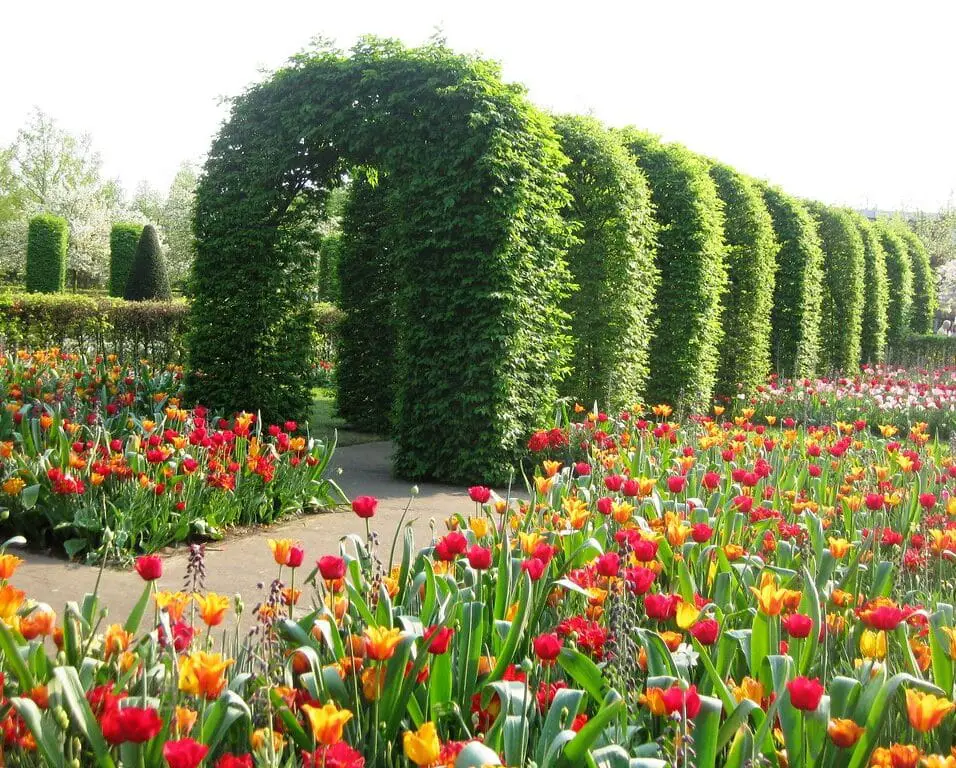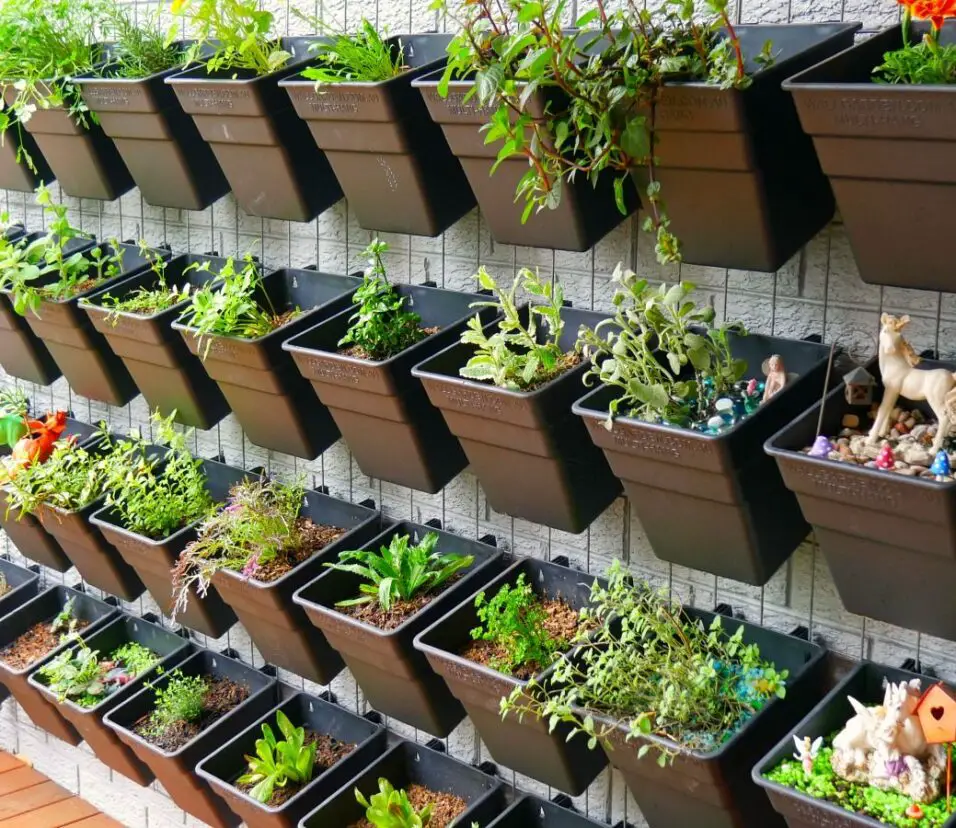What Is Back To Eden Gardening
Introduction
What Is Back To Eden Gardening: Back to Eden gardening is a gardening method that focuses on mimicking the natural processes found in forests to create a low-maintenance and sustainable garden. This gardening technique was popularized by Paul Gautschi, who discovered the benefits of using wood chips as a mulch in his garden. By following the principles of Back to Eden gardening, gardeners can create a thriving and productive garden without the need for synthetic fertilizers, pesticides, or excessive watering.
The concept of Back to Eden gardening practiced is based on the idea that nature has already perfected the art of gardening. In a forest, fallen leaves, branches, and other organic matter create a natural mulch that nourishes the soil and provides a protective layer for plants. By replicating this natural process in our gardens, we can create a self-sustaining ecosystem that requires minimal intervention.
One of the key components of Back to Eden gardening is the use of wood chips as a mulch. Wood chips are readily available and can be obtained for free or at a low cost from tree trimming services. When applied as a mulch, wood chips slowly break down, releasing nutrients into the soil and improving its structure. This helps to create a fertile and well-drained growing environment for plants.
Back to Eden gardening also emphasizes the importance of building healthy soil. By adding organic matter such as compost and manure to the soil, gardeners can improve its fertility and structure. This encourages the growth of beneficial microorganisms and earthworms, which further enhance the soil’s health and nutrient availability for plants.

Does back to Eden work?
Yes, Back to Eden gardening works. And for those who it does work, it works amazingly well. Other people report that it’s been far less effective for them. In most of those cases, it’s because they don’t understand the principles of composting.
Back to Eden is a gardening method that promotes natural and sustainable practices to grow plants and improve soil health. It is based on the principles of organic gardening and permaculture, emphasizing the use of mulch, compost, and minimal tilling. The goal of Back to Eden gardening is to create a self-sustaining ecosystem that mimics nature’s processes.
Back to Eden gardening also advocates for minimal tilling, as excessive tilling can disrupt the soil structure and deplete beneficial microorganisms. By avoiding deep tilling, the soil’s natural structure is preserved, allowing for better water infiltration and root development. This approach is believed to promote a healthier and more resilient soil ecosystem.
While Back to Eden gardening has gained popularity among organic gardeners, it is important to note that its effectiveness may vary depending on various factors such as climate, soil type, and plant species. Additionally, implementing this method requires time and effort to establish and maintain the necessary mulch and compost layers. However, many gardeners have reported positive results and believe that Back to Eden gardening is a viable and sustainable approach to growing plants.
How do you grow back to Eden garden?
1: SMOTHER WEEDS & GRASSES. Do I Really Need to Install a Weed Smothering Paper Layer First?
2: Apply a Layer of Compost.
3: Add a Layer of Wood Chips.
4: PLANTING IN YOUR BACK TO EDEN GARDEN.
5: WATER YOUR SEEDS / STARTERS.
Growing back to an Eden garden is a process that involves restoring a piece of land to its original, pristine state. It is a journey towards creating a harmonious and sustainable ecosystem that mimics the beauty and abundance of the Garden of Eden. This process requires careful planning, dedication, and a deep understanding of the natural world.
One of the first steps in growing back to an Eden garden is to assess the current state of the land. This involves evaluating the soil quality, the presence of any invasive species, and the overall health of the existing vegetation. Understanding the current condition of the land is crucial in determining the necessary steps to restore it to its former glory.
How to Start Growing a Back to Eden Garden Anytime of Year!
Once the assessment is complete, the next step is to develop a restoration plan. This plan should outline the specific actions that need to be taken to improve the soil quality, remove invasive species, and reintroduce native plants and wildlife. It may also include strategies for conserving water, promoting biodiversity, and creating a sustainable garden ecosystem.
Implementing the restoration plan requires a combination of physical labor, knowledge, and patience. It may involve removing invasive plants manually, improving the soil through organic methods, and carefully selecting and planting native species. It is important to remember that restoring an Eden garden is a long-term process that requires ongoing maintenance and care.
Throughout the restoration process, it is essential to prioritize sustainability and environmental stewardship. This means using organic and sustainable gardening practices, conserving water, and minimizing the use of chemicals and pesticides. It also involves creating habitats for native wildlife and promoting biodiversity within the garden.
What is special about Eden Gardens?
The Eden Gardens is an international cricket stadium in Kolkata, West Bengal, India. Established in 1864, it is the oldest and second-largest cricket stadium in India and third-largest in the world. The stadium currently has a capacity of 68,000.
Eden Gardens is a cricket stadium located in Kolkata, India. It is one of the most iconic and historic cricket grounds in the world. The stadium has a seating capacity of over 66,000, making it the largest cricket stadium in India and the second-largest in the world. Eden Gardens has hosted numerous international cricket matches, including several memorable moments in the sport’s history.
The architecture of Eden Gardens is also noteworthy. The stadium features a unique design with a distinctive red and white color scheme. The iconic Eden Gardens sign at the entrance is a symbol of the stadium’s grandeur. The ground itself is well-maintained and offers excellent playing conditions for cricketers.
Furthermore, Eden Gardens has a special place in the hearts of Indian cricket fans. The stadium has witnessed many historic victories for the Indian cricket team, including the famous 2001 Test match against Australia, where India successfully chased down a mammoth target to win the match. The memories created at Eden Gardens have made it a beloved venue for cricket enthusiasts across the country.
What is the Garden of Eden technique?
A Back to Eden garden features a thick covering of natural mulch to prevent weeds. Weeds still grow, but their roots are shallower and easier to remove.
Computer scientists use “Garden of Eden” to describe a cellular automaton state that can’t be reached from any other state. Cellular automatons are mathematical models with a grid of cells that can only be in particular states. According to regulations, the cell’s status depends on its neighbors.
Computer science and math applications include cellular automata, computational complexity, and cryptography using the Garden of Eden method. It illuminates computation’s constraints and patterns or arrangements that algorithms or processes can’t manage.
How much compost do I need for back to Eden garden?
Apply at least 3-4 inches of organic compost. Least 3-4 inches of wood chips as a mulch on your garden. Apply a dusting of composted animal manure as a natural fertilizer on top of your garden as needed throughout the growing season.
When it comes to creating a back to Eden garden, one of the key components is the use of compost. Compost is a nutrient-rich soil amendment that helps to improve the overall health and fertility of the soil. It provides essential nutrients to plants, improves soil structure, and helps retain moisture. However, the amount of compost you need for your back to Eden garden will depend on several factors.
The first factor to consider is the size of your garden. The larger the garden, the more compost you will need. A general rule of thumb is to apply a layer of compost that is about 2-3 inches thick. This will provide enough nutrients and organic matter to support healthy plant growth. If you have a small garden, you may only need a few bags of compost. However, if you have a larger garden, you may need to purchase compost in bulk or make your own.
Another factor to consider is the type of plants you will be growing in your back to Eden garden. Some plants require more nutrients than others, so you may need to add additional compost to meet their needs. For example, fruiting plants like tomatoes and peppers require a lot of nutrients to produce a bountiful harvest. Leafy greens, on the other hand, may not require as much compost.
In addition to the size of your garden and the type of plants you will be growing
You should also consider the quality of your existing soil. If you have poor quality soil, you may need to add more compost to improve its fertility. On the other hand, if you have rich, fertile soil, you may not need as much compost. It’s important to test your soil and make any necessary amendments before adding compost.
In conclusion, the amount of compost you need for your back to Eden garden will depend on the size of your garden, the type of plants you will be growing, and the quality of your existing soil. It’s always a good idea to start with a layer of compost that is about 2-3 inches thick and adjust as needed. Remember, compost is a valuable resource that can greatly improve the health and productivity of your garden.
Secondly, back to Eden gardening promotes the concept of “”no-dig”” gardening. This means that instead of digging or tilling the soil, gardeners simply add layers of organic matter on top of the existing soil. This approach helps to build healthy soil structure and encourages the growth of beneficial microorganisms, which are essential for plant health. Traditional gardening, on the other hand, often involves extensive digging and turning of the soil.
What are the key principles and practices of back to eden gardening?
Back to Eden gardening is a method that focuses on mimicking the natural processes of the forest to create a sustainable and low-maintenance garden. The key principles of this gardening technique include the use of wood chips as a mulch, minimal tilling, and the avoidance of synthetic fertilizers and pesticides.
The first principle of back to Eden gardening is the use of wood chips as a mulch. This mulch acts as a protective layer, retaining moisture in the soil, suppressing weeds, and providing a slow release of nutrients as it decomposes. The wood chips also create a favorable environment for beneficial organisms, such as earthworms, which help improve soil structure and fertility.
Another important principle is minimal tilling. Unlike traditional gardening methods that involve regular tilling to loosen the soil, back to Eden gardening encourages minimal disturbance of the soil. This helps preserve the natural soil structure and prevents the loss of valuable nutrients. Instead of tilling, gardeners simply add a layer of wood chips on top of the soil, allowing nature to take its course.
What are the benefits of practicing back to eden gardening?
Back to Eden gardening offers numerous benefits for both the gardener and the environment. One of the key advantages is the significant reduction in water usage. By using a thick layer of organic mulch, such as wood chips, the soil retains moisture much more effectively. This means that less water is required to keep the plants hydrated, especially during hot and dry periods. Additionally, the mulch acts as a natural weed suppressant, reducing the need for manual weeding and the use of herbicides.
Another benefit of back to Eden gardening is the improvement in soil health. The organic mulch slowly breaks down over time, releasing nutrients into the soil. This creates a rich and fertile environment for plants to thrive. The mulch also helps to regulate soil temperature, keeping it cooler in the summer and warmer in the winter. This promotes a more balanced and stable growing environment, which is beneficial for the overall health and productivity of the garden.
Furthermore, back to Eden gardening promotes biodiversity and encourages the presence of beneficial insects and microorganisms. The organic mulch provides a habitat for these organisms, which play a crucial role in maintaining a healthy ecosystem within the garden. This natural balance helps to control pests and diseases, reducing the need for chemical pesticides. Additionally, the increased biodiversity can attract pollinators, such as bees and butterflies, which are essential for the successful reproduction of many plants.
Can back to eden gardening be implemented in any climate or region?
Back to Eden gardening may be used in every climate, making it versatile and adaptable. Back to Eden gardening mimics the forest’s organic layers that create rich, nutritious soil. Regardless of climate or locale, the goal is to develop good soil for plant growth.
In dry locations, return to Eden gardening retains soil moisture, which is a major benefit. A thick covering of organic mulch like wood chips prevents evaporation and absorbs moisture. This decreases watering, which is crucial in water-scarce areas.
Back to Eden gardening boosts soil microbes and biodiversity. This means that soil can become more resilient and support plant development even in harsh climates. By developing a healthy and balanced garden ecology, back to Eden gardening may overcome climate and regional issues.
Are there any potential challenges or drawbacks to consider when practicing back to eden gardening?
While back to eden gardening offers numerous benefits, there are also some potential challenges and drawbacks to consider. One of the main challenges is the initial setup and preparation of the garden. Unlike traditional gardening methods, back to eden gardening requires a significant amount of effort in creating the deep mulch layer. This involves sourcing and gathering organic materials such as wood chips, leaves, and straw, which can be time-consuming and labor-intensive. Additionally, the process of building and maintaining the mulch layer may require regular replenishment and adjustment to ensure its effectiveness.
Another potential challenge is the adjustment period for plants. Since back to eden gardening focuses on creating a natural and sustainable environment, it may take some time for plants to adapt to the new conditions. This can result in slower growth initially and may require additional care and attention. Additionally, certain plants may not thrive in the deep mulch layer, especially those that prefer drier or more compact soil. It is important to research and select appropriate plant varieties that are well-suited for back to eden gardening.

Conclusion
One of the key benefits of Back to Eden gardening is its ability to conserve water. The thick layer of mulch acts as a natural barrier that prevents water evaporation from the soil, allowing plants to access moisture for a longer period of time. This is especially beneficial in dry and arid regions where water scarcity is a major concern. Additionally, the mulch layer helps to regulate soil temperature, keeping it cooler in the summer and warmer in the winter, which promotes healthy plant growth.
Another advantage of Back to Eden gardening is its ability to suppress weeds. The mulch layer acts as a natural weed barrier, preventing weed seeds from germinating and competing with the desired plants for nutrients and sunlight. This reduces the need for manual weeding or the use of chemical herbicides, making Back to Eden gardening a more environmentally friendly option.
Back to Eden gardening is a sustainable and effective gardening method that offers numerous benefits. By mimicking the natural processes of the forest, gardeners can create a low-maintenance and highly productive garden that conserves water, suppresses weeds, and promotes soil health. Whether you are a beginner gardener or an experienced horticulturist, Back to Eden gardening is a technique worth exploring for its ability to create a thriving and sustainable garden.








